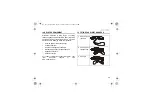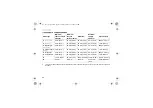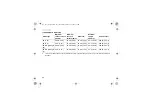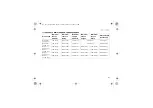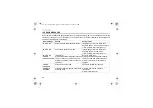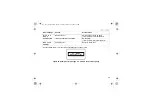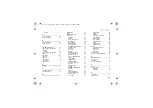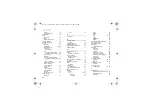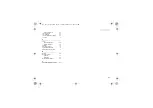
R
56
Fitting of
8
High temperature
35
Power supply
39
Printer
Miniprinter 42
Printing
Statistical summary
19
Printing readings
20
Probe positioning jig
41
Probes 33
Adapters 41
Capabilities 45–51
Extending life of
37
F (Ferrous)
What used for
33
F1 2
High Temperature PINIP
35
Substrate selection modes
20
F1 2 overview
34
Fitting of
8
FNF (Ferrous/Non-ferrous)
Substrate selection modes 20,
33
What used for
33
Maximum temperature
39
N (Non-ferrous)
What used for
33
Performance 44
PINIP
What used for
33
Replacement of
37
Wear of
37
Which one to use?
34
PSPC readings
90/10 rule
31
About 31
Q
Quick-start 6
R
Reading screen
10
Typical 13
Reading, taking
12
Resetting the gauge
16
Rough calibration method
22
RS232 interface
12
S
Scale selection, F1 F2
20
Screen
Welcome information
10
Screen symbols
Battery condition
7
Definition of
16
Screen symbols, explanation of
16
Set offset
23
Setting up the gauge
19
Shims 24
Ordering 41
Simple menu
Turning on/off
16
Smooth calibration method
22
SMS 6310-081-015
5
Softkey
BACK 15
CAL 13,
28
Flashing 14
Procedure 24
ESC 25
MENU 13
SEL 14
SET 26,
27
TEST 25
UP/DOWN 14
ZERO 27
Special sub calibration method
22
SSPC-PA2 (2004)
5
Standard deviation
38
Standards 5
Coated thickness
41
Statistics
Activating 19
Choice of
31
Clearing 30
Displaying on screen
30
Dual function probes
32
Increasing size on display
30
Overview 29
Terminology 38
Substrate selection
Automatic 20,
33
Manual 20,
33
Substrate thickness
Minimum 39
Switching on/off
9
Automatically 10,
20
T
Temperature
Effect on measurement speed 39
High, measuring of
35
Operating 39
Op_456_3_English.book Page 56 Thursday, January 22, 2009 7:58 PM



